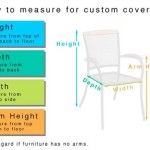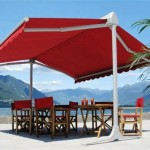Outdoor Patio Swing Canopy Replacement: A Comprehensive Guide
Outdoor patio swings provide a relaxing and enjoyable space for leisure. However, the canopy, exposed to the elements, often deteriorates over time. Replacing a worn or damaged canopy is a necessary maintenance task to preserve the swing's functionality and aesthetic appeal. This article provides a detailed guide to understanding, selecting, and installing a replacement canopy for an outdoor patio swing.
Understanding the Need for Canopy Replacement
The primary function of a patio swing canopy is to provide shade and protection from the sun's harmful ultraviolet (UV) rays. It also shields users from light rain and other weather elements, enhancing comfort and extending the usability of the swing. Over time, exposure to sunlight, wind, rain, and temperature fluctuations can significantly degrade the canopy material. Common signs that indicate the need for replacement include:
- Fading and discoloration of the fabric
- Tears or rips in the material
- Weakened and brittle fabric
- Mold or mildew growth
- Sagging or drooping canopy
Ignoring these issues can lead to further damage to the swing frame and a less enjoyable outdoor experience. A timely canopy replacement restores the swing's protective function and enhances its overall appearance.
Selecting the Right Replacement Canopy
Choosing the appropriate replacement canopy is crucial for ensuring a proper fit, durability, and aesthetic compatibility. Several factors must be considered during the selection process:
1. Measurement and Compatibility: Before purchasing a replacement canopy, accurate measurements of the original canopy are essential. Measure the length, width, and height of the canopy frame. Note the shape of the canopy (e.g., rectangular, curved, scalloped) and the method of attachment to the frame (e.g., pockets, loops, straps). Ensure the replacement canopy matches these dimensions and attachment style to guarantee a secure and proper fit. Some manufacturers provide model-specific canopies, which simplify the selection process. If the original model number is known, it can be used to search for compatible replacement parts.
2. Material Selection: The material of the canopy significantly impacts its durability, weather resistance, and longevity. Common canopy materials include:
- Polyester: A popular choice due to its affordability, water resistance, and UV protection. Polyester canopies are relatively easy to clean and maintain. However, they may fade over time with prolonged sun exposure.
- Olefin: Known for its superior fade resistance and durability. Olefin is also resistant to mildew and stains, making it a good option for outdoor environments. It tends to be more expensive than polyester.
- Acrylic: Offers excellent resistance to fading, water, and mildew. Acrylic canopies are highly durable and provide a premium look and feel. Solution-dyed acrylic fabrics offer the best color retention. However, acrylic is typically the most expensive canopy material.
- Canvas: A heavier-duty option known for its strength and water resistance. Canvas canopies provide excellent protection from the elements but require more maintenance to prevent mold and mildew growth.
The choice of material depends on the user's budget, climate, and desired level of durability and aesthetic appeal. Considering the local weather conditions is vital when selecting the material. For instance, in areas with frequent rainfall, a water-resistant material like olefin or acrylic is preferable.
3. Color and Design: The color and design of the replacement canopy contribute to the overall look of the patio swing and the outdoor space. Consider the existing color scheme of the patio furniture and the surrounding environment when selecting a canopy color. Lighter colors tend to reflect sunlight and keep the swing cooler, while darker colors provide more shade but may absorb more heat. The design can range from simple solid colors to patterned fabrics, depending on personal preference.
4. UV Protection: UV protection is a crucial factor, as it directly impacts the safety and comfort of users. Look for canopies that are specifically labeled as UV-resistant or UV-protected. These fabrics are treated to block harmful UV rays, reducing the risk of sunburn and skin damage. A higher UV protection factor (UPF) indicates greater protection.
Step-by-Step Guide to Canopy Replacement
Replacing a patio swing canopy is a straightforward process that can be accomplished with basic tools and minimal technical expertise. Follow these steps for a successful canopy replacement:
1. Preparation: Before starting, gather the necessary tools and materials, including:
- The new replacement canopy
- A ladder or step stool (if necessary)
- A screwdriver or wrench (depending on the canopy attachment method)
- Pliers (if needed to remove old fasteners)
- Cleaning supplies (to clean the swing frame)
Ensure the work area is clear and free of obstructions. It is also helpful to have a helper, especially for larger canopies.
2. Removal of the Old Canopy: The first step is to remove the old, damaged canopy. Carefully detach the canopy from the frame, paying attention to the attachment method. Common attachment methods include:
- Pockets: The canopy slides onto the frame through fabric pockets. Simply slide the canopy off the frame.
- Loops: The canopy is attached to the frame with fabric loops that are secured with buttons or Velcro. Unfasten the buttons or Velcro and detach the loops.
- Straps: The canopy is secured with straps that are tied or buckled to the frame. Untie or unbuckle the straps to release the canopy.
- Screws or Bolts: Some canopies are attached with screws or bolts. Use a screwdriver or wrench to remove the fasteners.
If the old canopy is difficult to remove due to rust or corrosion, use penetrating oil to loosen any stuck fasteners. Once the canopy is detached, inspect the frame for any damage or corrosion. Clean the frame with a mild detergent and water to remove any dirt, debris, or mildew.
3. Installation of the New Canopy: With the old canopy removed and the frame cleaned, the new canopy can be installed. Follow these steps:
- Positioning the Canopy: Align the new canopy with the frame, ensuring that the attachment points are properly aligned.
- Attaching the Canopy: Secure the canopy to the frame using the appropriate attachment method.
- Pockets: Slide the canopy pockets onto the frame, ensuring a snug fit.
- Loops: Attach the fabric loops to the frame and secure them with buttons or Velcro.
- Straps: Tie or buckle the straps to the frame, ensuring they are securely fastened.
- Screws or Bolts: Align the canopy with the frame and secure it with screws or bolts.
- Tensioning the Canopy: Once the canopy is attached, ensure it is properly tensioned. Adjust the straps or fasteners as needed to create a taut and even surface. Avoid over-tightening the canopy, as this can damage the fabric or the frame.
4. Final Inspection: After installing the new canopy, conduct a final inspection to ensure it is securely attached and properly aligned. Check for any loose straps or fasteners and adjust as necessary. Test the swing to ensure it functions smoothly and that the canopy provides adequate shade and protection.
Maintenance and Care of the Replacement Canopy
Proper maintenance and care can significantly extend the lifespan of the replacement canopy. Regular cleaning and preventative measures are essential for preserving its appearance and functionality. Consider the following tips:
1. Regular Cleaning: Clean the canopy regularly to remove dirt, dust, and debris. Use a soft brush or cloth and a mild detergent to gently scrub the fabric. Rinse thoroughly with clean water and allow the canopy to air dry completely before using the swing.
2. Stain Removal: Address stains promptly to prevent them from becoming permanent. Use a stain remover specifically designed for outdoor fabrics. Test the stain remover on a small, inconspicuous area of the canopy before applying it to the entire stain.
3. Mildew Prevention: Mildew can be a common problem, especially in humid climates. To prevent mildew growth, clean the canopy regularly with a solution of water and bleach (1 part bleach to 10 parts water). Ensure the canopy is completely dry before storing it or using the swing.
4. Protection from the Elements: When not in use, consider covering the canopy with a protective cover to shield it from the elements. This will help prevent fading, discoloration, and damage from UV rays, rain, and wind. During severe weather conditions, such as heavy storms or snow, it may be necessary to remove the canopy and store it in a safe place.
5. Seasonal Storage: During the off-season, when the patio swing is not in use, store the canopy in a clean, dry place. Fold the canopy carefully and place it in a storage bag or container to protect it from dust, moisture, and pests. Avoid storing the canopy in direct sunlight, as this can cause fading and degradation of the fabric.
/product/50/427904/1.jpg?strip=all)
Generic Outdoor Patio Swing Chair Top Cover Replacement Beige 195x125x15cm Best Price Online Jumia Egypt

Hzemci Outdoor Patio Swing Cushion Cover Set Egypt Ubuy

Sunrise Outdoor Patio Swing Canopy Replacement Top Walmart Com

Headerbs Outdoor Swing Canopy Cover 420d Oxford Cloth Replacement 4 Reinforced Straps Spacious Windproof For Patio Dark Green Yahoo Shopping

73x52in Replacement Swing Canopy Beige As Picture In 2024 Patio Outdoor

Yuehao Folding Chair Outdoor Courtyard Swing Ceiling Cover Awning Rain Replacement Cloth Canopy Grey Walmart Com

Replacement Waterproof Top Cover Outdoor Porch Swing Canopy For Patio Garden Cushion Excluding Temu Greece
/product/50/427904/6.jpg?strip=all)
Generic Outdoor Patio Swing Chair Top Cover Replacement Beige 195x125x15cm Best Price Online Jumia Egypt

Angeles Home 2 Seat Steel Porch Patio Swing Fast Drying Fabric Adjustable Canopy Side Pocket M10 8np089cf The

76 034 X51 Patio Outdoor Swing Canopy Replacement Porch Top Cover Seat Furniture Ebay








